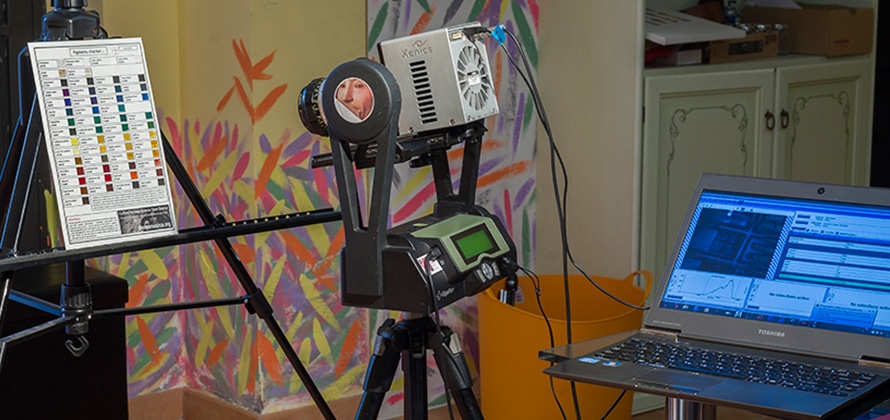
We just tested the Xenics Xeva-2.35-320 TE4, a 320 x 256 pixels T2SL (Type II Super Lattice) camera. It is sensitive from 1000 to 2350 nm and it is a promising tool for art examination. We evaluated its performance on our pigments checker and we will soon publish the results.
In order to evaluate in detail the capacity of the T2SL camera a thickness test panel was also created and examined. The pigments have been chosen based on their characteristic spectral hiding thickness. The hiding thickness of malachite steadily increases over the wavelengths and it becomes more transparent at longer infrared wavelength. Malachite is one of those pigments that should benefit more from the use of the T2SL camera with sensitivity until 2350 nm. At the shorter infrared wavelengths to which is sensitive the “full spectrum” digital camera the hiding thickness is small and the pigment results generally opaque with this examination. The InGaAs camera can penetrate it and the T2SL is supposed to be able to observe even thicker malachite’s paint layers.
The camera was coupled to a panoramic head and the images were collected with the Panoramic Infrared Reflectography method.
This study was possible thanks to Lot-Quantum Design – a leading European distributor of high-tech instrumentation and consumables for scientific, academic and industrial research. They collaborate with CHSOS providing innovative equipment for testing for art examination.








